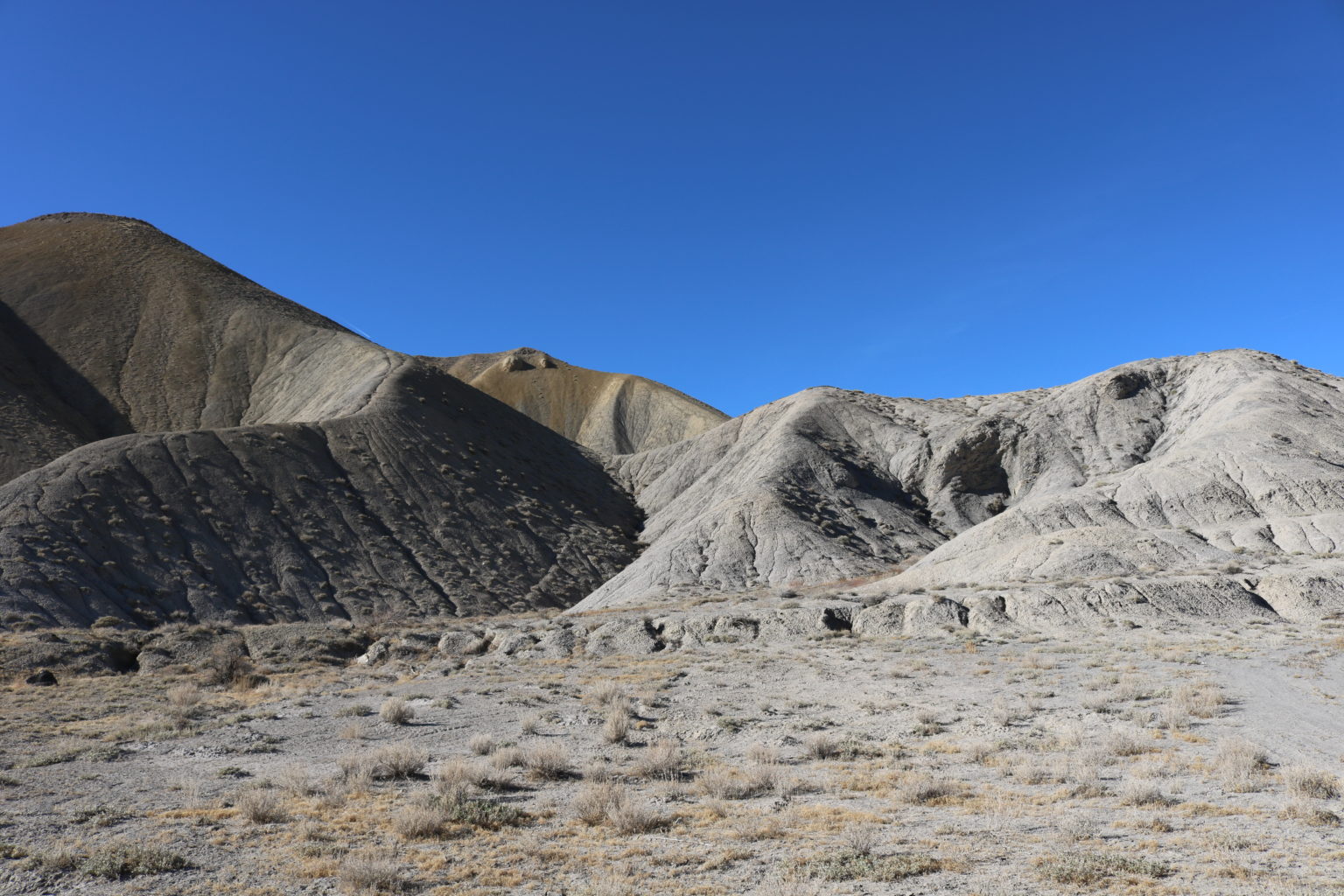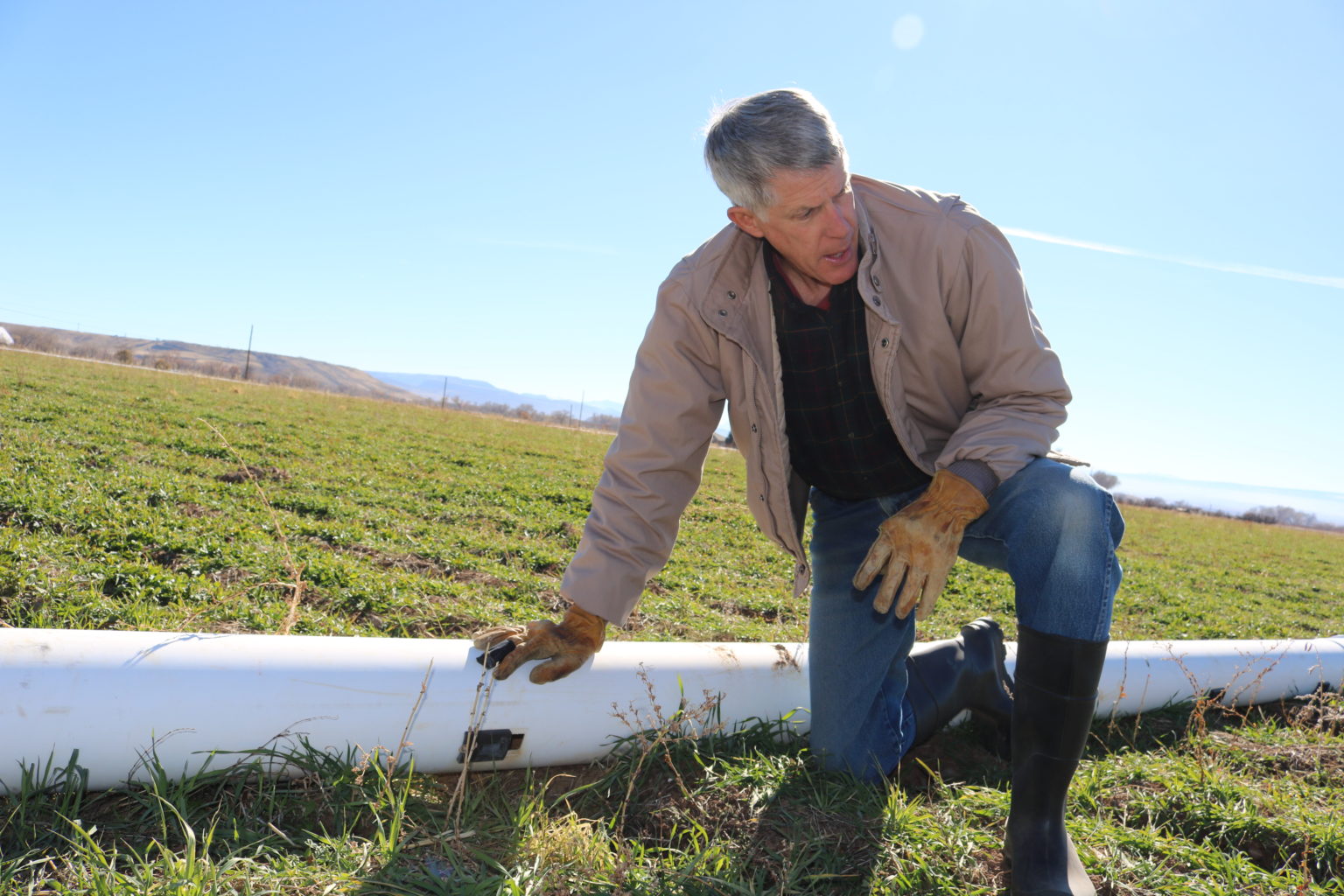
By Natalie Keltner-McNeil
State water-quality officials will soon evaluate whether two water-improvement programs in the Gunnison River basin have successfully reduced a chemical that is toxic to endangered fish.
The Colorado Department of Public Health and Environment’s Water Quality Division is analyzing five years of data on selenium levels in the Gunnison, where heightened selenium and salinity have harmed Colorado pikeminnow and razorback sucker populations.
If selenium levels stay at or below the state standard of 4.6 micrograms per liter in any of the segments of river that are analyzed by division staff, those segments will be reclassified from a water body that threatens aquatic life to one that meets state water-quality standards, said Skip Feeney, assessment workgroup leader for the Water Quality Control Division.
After analyzing selenium data, the division will submit a proposal after the first of the year to the CDPHE Water Quality Control Commission recommending a status change if necessary, Feeney said.
“Our goal is to provide an accurate, defensible proposal to the commission and let the commission make an informed decision,” Feeney said. In an October interview, he said he didn’t yet know “what the water-quality status is looking like.” He added: “That’s just part of the process — we’re just getting started.”
Reclassifying the river has been a goal since the establishment nearly a dozen years ago of the Selenium Management Program, a collaboration among government agencies, nonprofits and stakeholders.
Observers have found elevated selenium levels throughout the basin, but a key river segment of focus is the main stretch of the lower Gunnison that winds for 58 miles from Delta to the confluence with the Colorado River in Grand Junction. This section, which begins at the confluence with the Uncompahgre River, was designated in 1994 as essential to pikeminnow and razorback survival by the U.S. Fish and Wildlife Service.

Historically, this segment, which runs through the basin’s most populated and developed corridor, has contained selenium levels toxic to the two species of fish, according to Dave Kanzer, deputy chief engineer for the Colorado River Water Conservation District and a member of the Selenium Management Program.
During the last regulation cycle, which used data gathered from multiple different entities from 2010 to 2015, the calculated level for selenium in the mainstem of the Gunnison was 6.7 micrograms per liter, a level that is 2.1 micrograms above the state standard, according to MaryAnn Nason, the communications and special-projects unit manager at CDPHE.
Yet, the past five years of U.S. Geological Survey data show that selenium levels have stayed below 4.6 micrograms. Each yearly average was below 4.6, with the average for all five years sitting at 3.2, according to an analysis by Aspen Journalism.
Kanzer cautioned that the calculation using only USGS data was “not directly applicable to the CDPHE listing methodology” — because it doesn’t take into account all available data — but he said “it does tell a good story.”
To calculate the final selenium load for each segment in the Gunnison River, CDPHE is analyzing data from the past five years from the USGS; Colorado River Watch, an environmental advocacy organization; the state; and United Companies, a Grand Junction-based construction company that is required by the state to monitor selenium levels near the gravel pits that the company operates.

Selenium’s origins and pathway to the rivers
Selenium is a natural element found in Mancos shale, a soil common throughout the Uncompahgre and Grand valleys in the Gunnison River basin. When irrigators transport water to and through their farms in open canals, selenium dissolves in the water and either percolates into groundwater or gets carried into drainage ditches that discharge into the Gunnison.
“Where we have good flows of water, (selenium) concentrations are not an issue because of dilution,” Kanzer said. “But smaller tributaries, smaller water areas or backwater areas where you don’t have good circulation, you get selenium that can accumulate in the ecosystem, really in the sediment and in the food web.”
Colorado pikeminnow and razorback sucker exist only in the Colorado River basin, said Travis Schmidt, a research ecologist for the Wyoming-Montana Water Science Center. The species are able to swim between the Colorado and Gunnison rivers with the aid of a fish passage at the Redlands Diversion Dam on the lower Gunnison, accumulating selenium and transferring the element to their offspring.
Selenium gathers in fish tissues when females ingest algae or smaller fish. It then is transferred to offspring during the egg-laying process, Schmidt said.
“Selenium replaces sulfur in protein bonds, so anything that lays an egg can transfer a lot of selenium to its progeny,” he said.
Once transferred to fish eggs, the element causes neurological, reproductive and other physiological deformities in a significant proportion of both species of fish, Schmidt said. A study that analyzed fish-tissue samples collected by federal and state agencies from 1962 to 2011 found that 63% of Colorado pikeminnows and 35% of razorback suckers exceeded healthy selenium tissue concentrations in the upper Colorado River basin.

A happy, fringe benefit of salinity control’
Selenium was first addressed by the Fish and Wildlife Service in 2009 in a document written for the Bureau of Reclamation. The document analyzed the effects of the Aspinall Unit — a series of three dams on the upper Gunnison River — on Colorado pikeminnow and razorback sucker recovery. In the document, the service concluded that in order to comply with the Endangered Species Act, the Bureau of Reclamation had to increase spring flows downstream of the Aspinall Unit and initiate a management program to reduce selenium in the Gunnison. As a result, the Selenium Management Program was founded in 2009.
“It’s a two-prong type of plan,” Kanzer said of the program’s goals.
The first objective is to meet the state standard for dissolved selenium throughout the Gunnison River basin, particularly for the 58-mile main segment, Kanzer said. The second goal is to help transition the pikeminnow and razorback sucker from endangered populations to self-sustaining populations, Kanzer said.
Program members help irrigators obtain funding from the Bureau of Reclamation and Department of Agriculture, said Lesley McWhirter, the environmental and planning group chief for the bureau’s Western Colorado Area Office. Individual farmers can apply for funding for on-farm irrigation projects through the Department of Agriculture, and ditch companies can apply for funding projects that deliver water to farms through the Bureau of Reclamation’s Salinity Control Program.
The goal of the salinity program, which was started in 1974, is to reduce salt loading into the Colorado River basin. The program awards grants to ditch companies every two to three years. In the last grant cycle, in 2019, the Bureau of Reclamation awarded 11 ditch companies a combined $37 million to line irrigation systems. Of the 11 companies, eight are located in Mesa, Montrose and Delta counties, where the Gunnison River runs, according to McWhirter.
Mancos shale is rich in salt and selenium. So, when farmers receive funding to reduce salt loads, selenium often decreases as well. This is exemplified by a USGS analysis that found selenium loads had decreased by 43% from 1986 to 2017 and by 6,600 pounds annually from 1995 to 2017.
“The selenium control is a happy, fringe benefit of salinity control,” said Delta County farmer Paul Kehmeier.

CDPHE plans to submit proposal in January
CDPHE plans to submit its proposal to the Water Quality Control Commission in early January, Nason said.
If the main segment of the Gunnison River is found to have selenium levels below the state standard, it would mean the Selenium Management Program is closer to obtaining the dual goals of fish protection and selenium reduction, Kanzer said.
Even if the main segment of the Gunnison is reclassified, the Selenium Management Program will continue efforts to reduce selenium in the Gunnison basin, Kanzer said. These efforts include data gathering and analysis and facilitating meetings among government agencies, nonprofits and stakeholders.
The Colorado pikeminnow and razorback sucker depend on the entire Gunnison basin, so other segments containing toxic selenium levels require reduction efforts. If any new research shows that fish are harmed by selenium at levels lower than 4.6 micrograms per liter, the state could lower the selenium standard, reclassifying segments of the Gunnison as a danger to aquatic life, Kanzer said.
“The jury’s still out — we’re still trying to understand what levels are acceptable and not acceptable,” he said. “There’s always room for refinement of that standard, and that dialogue is ongoing.”
After the division submits its proposal to the commission, the proposal will be released to stakeholders and anyone who has applied to receive hearing notices or track Colorado’s regulations. The public can submit their own proposals or comments by emailing the commission. In May, the commission will review all proposals and comments to make a decision on the river segment’s 2020 status, Feeney said.
This story ran in the Dec. 3 edition of The Aspen Times and the Dec. 3 edition of Aspen Journalism.
This story was supported by The Water Desk using funding from the Walton Family Foundation.
The Water Desk’s mission is to increase the volume, depth and power of journalism connected to Western water issues. We’re an initiative of the Center for Environmental Journalism at the University of Colorado Boulder. The Water Desk launched in April 2019 with support from the Walton Family Foundation. We maintain a strict editorial firewall between our funders and our journalism. The Water Desk is seeking additional funding to build and sustain the initiative. Click here to donate.





